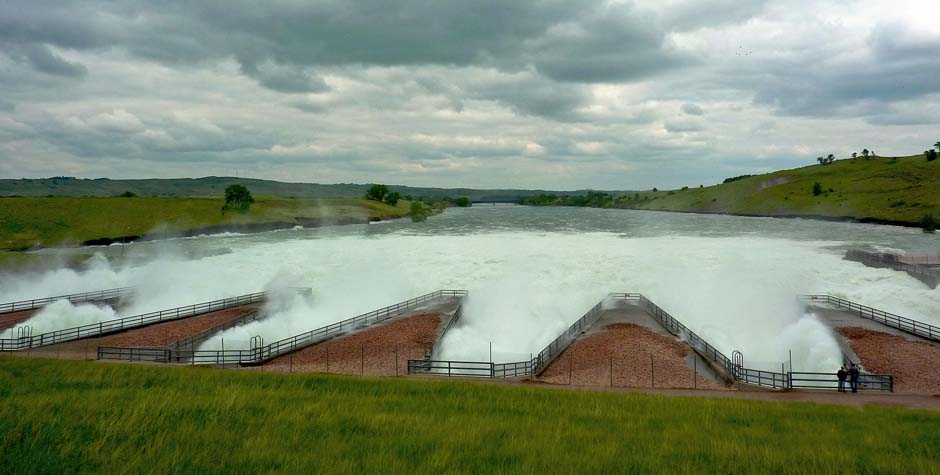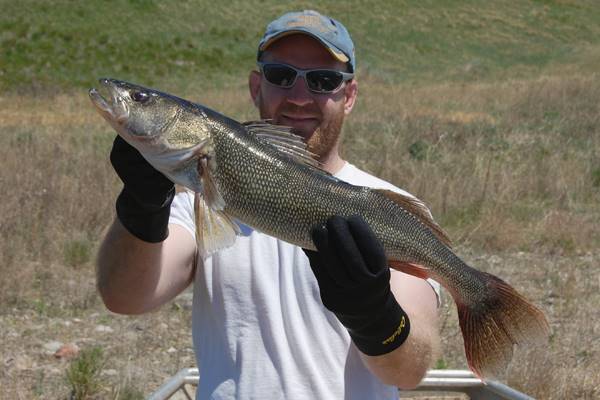Tagging Study Charts Lake Oahe Walleye
 National Archives at College Park - Still Pictures, Public domain
National Archives at College Park - Still Pictures, Public domainSouth Dakota State University researchers have tagged more than 26,000 fish in the last three years during a study of Lake Oahe walleye. Plans are for one more year of tagging and an additional year beyond that of data collection to assess the lake’s walleye stocks.
At the heart of the investigation is a question relating to how anglers harvest walleyes. Figuring out the patterns involved will be helpful to wildlife managers both nearby and elsewhere, including the Great Lakes and Canada.
Each fish is fitted with a metal jaw tag stamped with an identification number and a phone number to report when and where the fish was caught and whether it was harvested or released. Each angler that makes a report gets a certificate.
There’s been a lot of good public input, researchers say, with information reported on nearly 6,000 walleyes. By March this year, scientists began to even get calls from near Bismarck, but most reports have come in from May through August. By early June, scientists get as many as 70 calls a day.
So far, researchers have uncovered that there seems to be much more influence from Mother Nature on the lake’s walleyes than from fishermen. In Lake Oahe, the rise and fall of rainbow smelt appears to be the best indicator for how walleye stocks will do. More smelt means healthier walleye, and vice versa.

South Dakota State University doctoral student Eli Felts holds a walleye from Lake Oahe that will be tagged. (Credit: South Dakota State University)
That is because rainbow smelt are the top food source for walleyes in Lake Oahe, especially those from Whitlock Bay, which is downstream of the Oahe Dam.
So when flooding leads to high discharge rates at the dam to reduce upstream water levels, the numbers of smelt go down, hurting walleye populations. That’s exactly what’s happened in 1997 and 2011, years during which large flooding occurred.
A couple of years after flooding in 1997, the walleye population crashed. By sheer coincidence, the South Dakota scientists had been gathering data for another project in the early 2000s and did a retrospective analysis to figure out what had happened biologically to the walleye population.
When the river flooded in 2011, South Dakota State scientists worked together to develop the walleye tagging project, which began in 2012 through support from the South Dakota and North Dakota Game, Fish and Parks Departments.
The researchers plan to consider habitat enhancements on the lower part of the lake that could favor smelt or other types of prey fish. They may even stock gizzard shad, but their tagging study should provide more needed info before that happens. Scientists will also likely consider factors that affect healthy rainbow smelt populations, like flooding and spawning habits.
Researchers hope that the study yields information about how and why walleye prey fish are fluctuating year over year in the lake. From there, they are looking to develop strategies to increase numbers of the fish so that the impacts of flooding are less severe to walleye.


0 comments